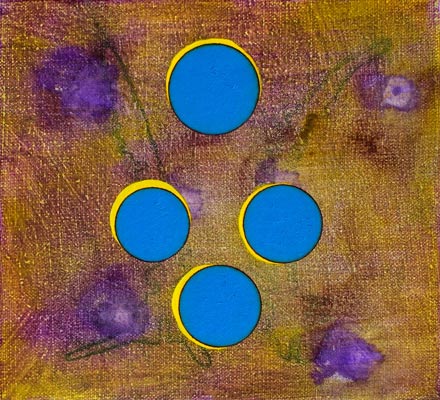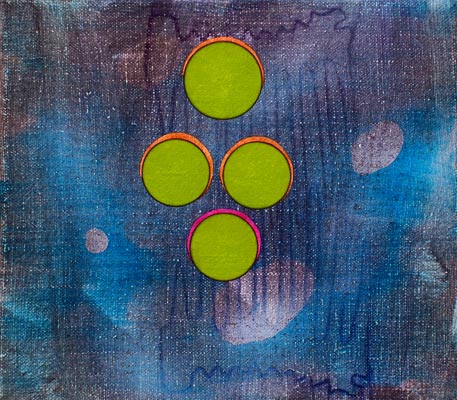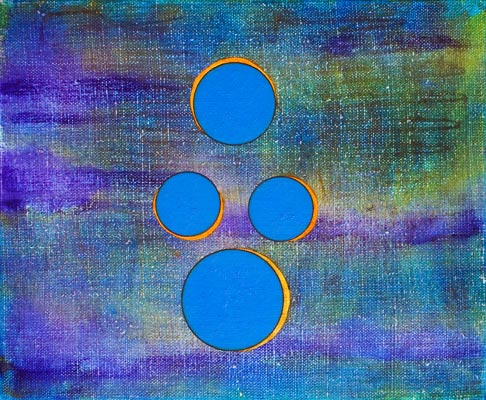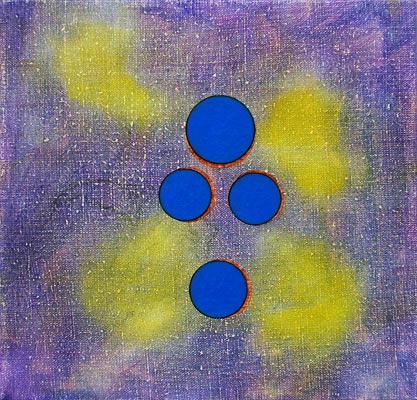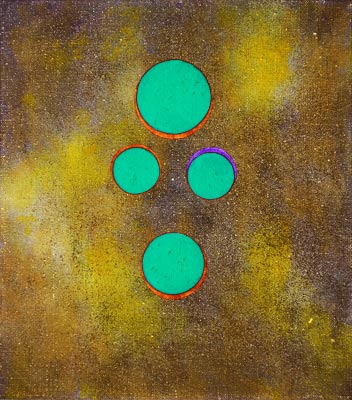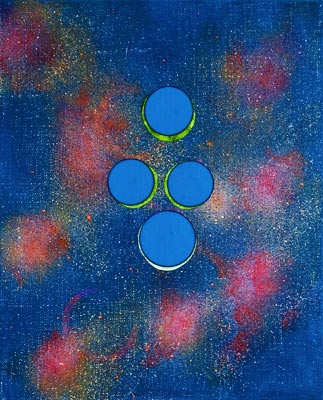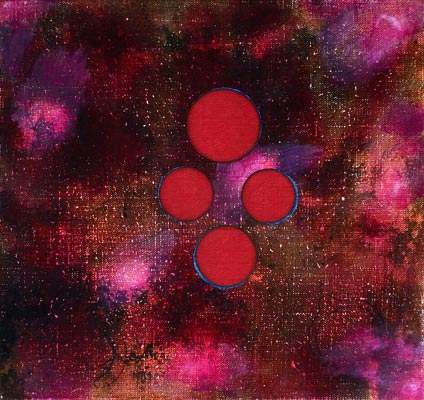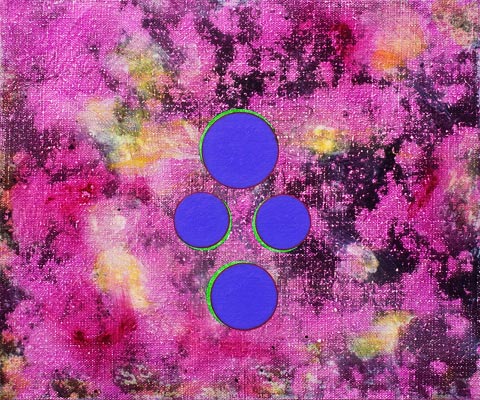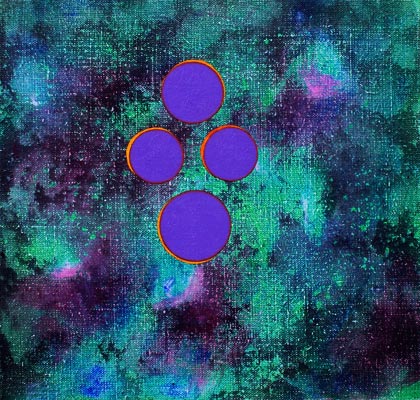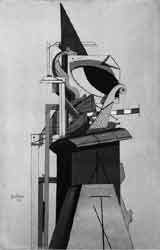Unfinished Metaphysical Readymade
sitemap
drawings
paintings 1 2 3 4 5 a b c -
- A B . . . . . . . new
installations
projects
reviews
titles of ...
paintings not created yet ...
Unfinished Metaphysical Readymade
Adriano Altamira; De Chirico and Duchamp (Part 1)
Adriano Altamira
De Chirico and Duchamp (Part 2)
Although they are not dominant icons, instruments relating to optics or to eyesight in general appear with a certain frequency in de Chirico’s work: for example spectacles, which take on great paradoxical significance in pictures such as La nostalgie du poète, e Portrait de Guillaume Apollinaire. Here the spectacles are actually those for people with impaired vision, and thus something of an oxymoron, to be considered in relation to the Second vision attributed to poets and prophets. In other paintings such as The Jewish Angel (fig. 5) and Le salut de l’ami lointain, some kind of apotropaic eyes appear (the “Cretan eye” that de Chirico mentions in Zeus the Explorer and in Hebdomeros), once more suggesting the magical and not purely physiological quality of vision. At other times, the glasses seem to allude to shop signs (see The Serenity of the Scholar, fig. 6) and thus fall into the category of those signs that the city seems, obscurely, to reveal to the painter. Other signs of this nature are hands and arrows (for example in Nature morte, Turino printanière and Le jour de fête), on the same level as the chimneys and archways in their ability to bring about a sort of metaphysical ecstasy[10]. In other works these signs are in the form of mysterious letters, such as the X which appears in the above-mentioned The Serenity of the Scholar as well as in the Portrait de l’artiste of 1914, acutely linked by Fagiolo dell’Arco to an important passage from Nietsche’s Gay Science. The philosopher uses this letter of the alphabet as a metaphor for an itinerary that has almost reached an end: the moment prior to discovery[11].
|
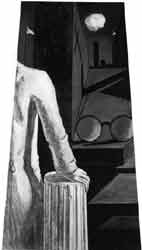 fig. 6 - Giorgio de Chirico The Serenity of the Scholar 1914, oil on canvas, 130×72 cm |
Yet other paintings feature blackboards and pictures placed on easels (Le philosophe et le poète), inscribed with mysterious writings (Le temple fatal), perspective schemes that make mysterious links to the rest of the figuration (Le double rêve du printemps), or even the “pictures within pictures” that would open so many doors for the Surrealists, in particular Magritte[12].
This metaphysical instrumentation, which after 1916 would become more and more articulated complex, and in a certain sense abstract, seems to point to the absolutely impossible relationship between the objects represented. At the same time, the entirely fictitious place in which these objects are placed, among set squares, props and frames, stresses the irreducibility of the everyday role the objects previously played, while in their new function, through the increasingly complicated set-up they form, their relationship to the world of symbolic representation is revealed[13]. The picture within a picture in a certain sense represents the culmination of this process: it shows a painting that (like in a game of Chinese boxes) sends us back to another painting, not only evoking the tautological essence of every painting, which reflects on the nature of painting itself, but also making it impossible to measure the distance between the represented object and the real reality.
Paradoxically many of these dechirican themes are quite closely echoed in Duchamp’s work: despite being part of a world of expression diametrically opposed to that of the painter from Volos, the French artist also seems to have contemplated the nature of things, leading him to a kind of other sight.
For example, if de Chirico alludes to second sight by depicting glasses for the blind, Duchamp shows us a comparable enigma in his 1920 work Fresh Widow (fig. 7). This little model of a “French window” with obscured glazing creates a kind of perverse double bind between the object and the title which describes it. Note also the play on words between French window and fresh widow: indeed the image of a widow can be paralleled to that of a window which the gaze can no longer penetrate because it is hung with black. As with de Chirico’s glasses for the blind, this blinded window also requires a special kind of visual attention in order to discover and evaluate its true nature.
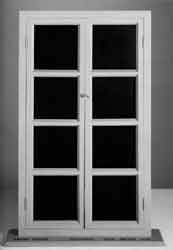
fig. 7- Marcel Duchamp; Fresh Widow, 1920, 77.5 x 45 cm.
Beyond this interest towards a metaphorical viewpoint, which gradually takes over from a traditional one, it should be considered how the technique of extrapolating and moving objects from the everyday sphere to the world of representation follows similar rules despite the difference in intention. De Chirico seems to truncate the usual relationship that objects have with their normal context, transporting them outside to his city squares and then to places that increasingly reveal their betrayal of theatrical staging. In this regard it is also curious to note what de Chirico seems to think of the theatre, or of the cinema. In Hebdomeros for example he writes: “…a false beard on the screen becomes more real than a natural beard, just as a scene made of wood and cardboard is always more real than a piece of nature”. Much more than scenography! Here de Chirico is talking about fiction within fiction, which curiously always appears more real than the real. Again in Hebdomeros, talking of actors, de Chirico notes that “…they recite on those dusty boards, on those boards that, in spite of all the new ideas, changing tastes and customs, always have something dirty and shameful about them. More than once Hebdomeros, meditating on undiscovered enigmas, asked himself this question: Why does the theatre always have something shameful about it?” The reply is not given, maybe to highlight how even the most abstract theatrical staging (that of the Disquieting Muses, for example) will never be able to wipe out the sort of original shame that links metaphysical compositions to those unpleasant or pleasant, painful or happy feelings which are the basis of the revelation the objects represent. This is probably related to the pudenda origo evoked by Nietzsche in his Gay Science when talking, in fact, about appearances. Fabrizio Desideri, annotating Derrida on the question of pudenda origo, writes: “Truth, when interrogated and considered as a ‘woman’, is given as distance from one’s self, appearing as the ‘non-truth of the truth’… the veil reveals the appearance as distance”. Indeed for Nietzsche “the immediateness of the appearance is artifice, it is Kunst-werk”. On another level, the truth unveiled is no longer such.
In Duchamp’s case the readymades (made of real objects) are de-located from their everyday place of origin, to a place (the artist’s studio, the gallery) in which their primitive function is denied, radically transforming their very nature. The name of the object also gets changed, such as in Trébuchet (trap, obstacle), a readymade from 1917, which is simply a coat rack fixed to the floor instead of the wall. Duchamp, in an interview with Sidney Janis in 1953, explains that he had left the coat rack on the floor through lack of attention or untidiness, and in the end got so tired of stumbling over it that he fixed it to the ground. Jean Clair affirms, however, that its title, Trap, comes from chess-playing terminology, and that the explanation can be found in the treatise the artist wrote on the subject. In this regard, however, Schwarz also cites a sentence from Joyce’s Ulysses, which describes a lady “with her high crooked French heels” who stumbles: “Tableau! That would have been a very charming exposé for a gentleman like that to witness”, and defines the Trap as a three-dimensional play on words – a term used on other occasions by Duchamp himself. It is worth noting that in a few cases the French artist hung up the readymades, both to emphasise their new non-function, and also to distinguish them, notes Jean Clair, from traditional works of art, normally displayed on pedestals or attached to the wall. This is the case of In advance of the broken arm (1915), Porte-chapeau (1917), and of course Unhappy Readymade (1919), a gift to his sister Suzanne, an ephemeral work of which remains just one photograph, and which Suzanne immortalized in a little painting of her own.
Schwarz links this particular form of “hanging” of the object to the idea of the Hanged Female, and therefore yet again to the Bride in the Large Glass. Let us not forget that Roussel’s demoiselle was also hanging up.
To sum up: if Duchamp only has to indicate an object (the well-known action of pointing) to declare it a work of art, what does he have to do to give it a different meaning from its original one? Irrespective of the complex problems that arise from Duchamp’s much-discussed symbolism, it could be maintained that Duchamp also saw interrupting the relationship between an object and everyday life as the first step towards transforming it into a significant element within an expressive context. To reach this end, there are two fundamental steps: dislocation (as in the examples above) and renaming. The first consists in placing the object in an unfamiliar setting, in a way that emphasizes its new allusive/expressive function. The second consists in indicating it in terms that – as Duchamp himself says – drag the spectator “towards airier regions”.
De Chirico takes a somewhat similar step when, having gone out and bought a pink rubber glove at a department store, he takes it into his studio, and puts it into dialogue with the most extraneous object imaginable: the head of an ancient god. De Chirico thus removes the object from everyday relationships that previously gave it a context (department stores, its practical function) to make it take on new ones (its symbolic role, its spectral presence). Duchamp cannot take this second step, given that he does not weave relationships between several objects (perhaps excepting his Bicycle Wheel or, in part, his Grinder), and thus must trap the individual object in a complex web of word games; he has to therefore rename them in order to highlight their new nature, which in the end is – equally – a spectral one. Let us take note that from 1918 onwards Duchamp paid particular attention to the shadows created by his readymades (fig. 8), photographing them on the walls of his studio and painting them on the canvas destined for Katherine Dreier, Tu m’ (1918). Even the retrospective exhibition held in 1964 at the Arturo Schwarz gallery, which had reconstructed the series of lost readymades, emphasized the artist’s desire to draw more attention to the shadows on the walls than the objects present in the gallery. Coming back to the problem of naming – the relationship between image and word – it should be noted that this was not an uncommon topic in those years. Picasso himself had noted that the profile of a woman (drawn) or the letters w-o-m-a-n had the same capacity and role in evoking the idea of “woman” in the spectator. Rubber-stamped words appeared on cubist collages and paintings from 1913, alternating with images; and Malevich himself had exploited such techniques to achieve a particular objective of his own with his alogist compositions. Some of these paintings, indeed, combine not only pieces of collage and painting, but also written words. Furthermore, the painted images alternate a Cubist-Futurist style (or geometric images) with figurative details. Words, abstract forms and concrete forms (along with style and non-style) are thus placed on a par. The new language therefore ends up as a mix of incongruous elements, as yet unbeknownst to Malevich, this was a most Dadaist approach.
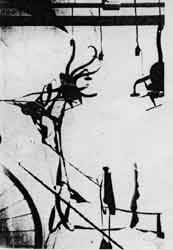
fig. 8
Coming at last to de Chirico’s picture within a picture[14] it should be underlined, as mentioned above, that although de Chirico used this technique to plainly demonstrate painting’s great fiction (a perfect understanding of which is shown by Magritte in Les mots et les images, and later in the series La condition humaine), the idea that fiction within fiction could become more convincing than reality also gained force. Such an intuition is certainly not casual, not least because de Chirico focuses more on sensations inspired by images than on reproducing reality.
He seems thus to become the first painter to cite painting within a picture, just as one would quote a text within another, even if during the metaphysical phase the images represented in the pictures within pictures are never derived from other artists. At times they are geographical maps, images of factories or buildings. Thanks to this device, the picture opens up like a book of many stories – like a Hellenistic novel – or like a theatre piece where curtains open to reveal events going on in parallel to the main story (for example Shakespeare’s theatre within theatre), enriching the overall meaning.
In Marcel Duchamp’s case (beyond the above-mentioned self-quotation of his own readymades in Tu m’) it is natural to discern the most striking instance of this technique in his Boîte en valise (1941), a kind of portable Museum; a work containing other, miniature works, and at the same time a sort of rational autobiography. The Boite (which is neither the first nor the only container used by the artist to present a work), has another interesting aspect: it contains a series of reproductions, of Duchamp’s paintings from the pre-cubist phase onwards, of the Glass, and of the readymades. In this way the Boîte seems to affirm a continuity of content through different styles, or non-styles, and perhaps even a relationship between apparently unrelated works. The Glass had already announced a similar agenda, showing in its lower part images recalling the mechanical and anti-emotional aspect of the first readymades (some maintain that the Broyeuse de chocolat painted as a trompe l’oeil is a kind of substitute for an overly-bulky readymade) and in the upper part, reproducing a detail from a cubist canvas. It is interesting to note that while breaking away completely from the tradition of painting, the Glass conserves a trompe l’oeil perspective in many details, as if to give a semblance of reality to the work’s mechanical metaphor. Here it is worth observing how, according to Cocteau, de Chirico also used trompe l’oeil techniques “as a criminal reassures his victim”.
It should be underlined, in conclusion, that beyond his use of the picture within a picture, all of de Chirico’s – and in a certain sense also Duchamp’s – work is nothing but a great self-quotation. Not only as the works produced in old age, quote, complete, and re-write works from his adulthood and youth, but that his entire production is basically a vast work of self-referencing. De Chirico often paints images that appear to be doubles of paintings he has already done: The Amusements of a Young Girl (1916, fig. 9) seems to be a sort of response to Le chant d’amour, just as Le philosophe of 1924 seems to be a “romantic” version of Le cerveau de l’enfant. The recent book of drawings by the artist, curated by the Giorgio and Isa de Chirico Foundation, clearly shows how drawings from the nineteen seventies often put forward meditations (rather than re-editions) of works from the past.
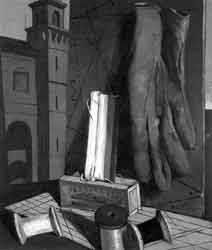
fig. 9 – Giorgio de Chirico; The Amusements of a Young Girl, 1915, oil on canvas, 47×40 cm.
In a way, de Chirico himself offers us the key to this enigma in the Self-portrait (now in Toledo, Ohio) in which the artist fixes his gaze on his own bust that looks back at him “from the past to the future” as stated by Maurizio Fagiolo dell’Arco.
After all, the artist Duchamp of Etant donnés seems to leave, as the final act of his existence, an installation which is almost the final statement regarding Large Glass, a masterpiece left “definitively unfinished” at just 36 years of age.
Translated by Hannah Chapman
(Adriano Altamira; De Chirico and Duchamp, Metafisica, 2006, No. 5-6, p. 86-90.)
Notes:
[10] Compare what the artist writes in a 1919 text published in Rome in «Ars Nova» III, 3: “Nobody has ever thought, for example, to evoke the specters of cities, things, monuments, furniture, machines; to penetrate the fantastical aspect of scientific and industrial instruments”. And a little further on: “Consequently, a hyper-materialization of the things surrounding us, as well as our own beings, could lead us to the top of the ladder that leans against the wall of the unknown, and we would be able to observe this phenomenon with curiosity, of course, but also with that strange happiness that I would call metaphysical ecstasy: this feeling never fails to mark the discovery of a new land”.
[11] This is an extract from the foreword to The Gay Science: “… (in this book) gratitude overflows at every moment, just as if the last thing you expected had actually happened, the gratitude of a convalescent… only great pain is the extreme liberator of the spirit, in that it is the master of the great suspect that makes every U into an X, a real, actual X, that is the penultimate letter of the alphabet before the last…” It is worth remembering that de Chirico himself recalls having read Nietzsche in Italy while recovering from an intestinal illness. At the end of the same extract, I would also note this phrase: “The fascination of all that is problematic, the joy incited by the X is too big for such spiritual and spiritualized men, because it does not always appear as a light that shines above the uncertainty of the problematic, above the dangers of insecurity…”, which seems to link the X to the concept of the enigma. Regarding the curious iconography in this Self-portrait, which along with the X also features two feet, two fragments of statues linked by Fagiolo dell’Arco to Mantegna’s Saint Sebastian; I would also mention that number 52 of the rhyming prelude to The Gay Science, entitled Writing with feet, in which the “scribe” foot that runs “on fields and across the page”, and paradoxically, he too writes. Perhaps this alludes to a Dionysian completeness of the human body, which gives importance to the lower parts as well as the usual ones – the face, the head or at most the hands –.
[12] Once more on the subject of de Chirico’s multiple perspectives, conveyed by the artist in various ways, it could be hypothesized that the disarticulation of perspective hints at another way to read the logical disarticulation that occurs in dialogues between objects: each one seems to imply a point of view that does not correspond to the others. Magritte, on the other hand, plays with scale: for example the toy house next to the window (inside the room) identical to the real house that can be seen outside the window. In the painting the two houses are exactly the same.
[13] In an Éluard-Picasso manuscript de Chirico writes: “Live in the world as in a huge museum of oddities, of curious multicolored toys that change appearance, and that, like children, we sometimes break into pieces to see what they are like inside, and discover in disappointment that they are empty”. A little later he adds: “There is no point in talking about history or the causes of this and that; all this describes but explains nothing, for the eternal reason that there is nothing to explain, and that the enigma always remains”; a phrase that somehow recalls Duchamp’s “There’s no solution because there is no problem”.
[14] Here I would like to mention Jole de Sanna’s theory about pictures that cover other pictures, explained in the last edition of «Metafisica», as a hidden underside of a practice that de Chirico would go on to declare explicitly through the depiction of one or more pictures represented within a painting.
